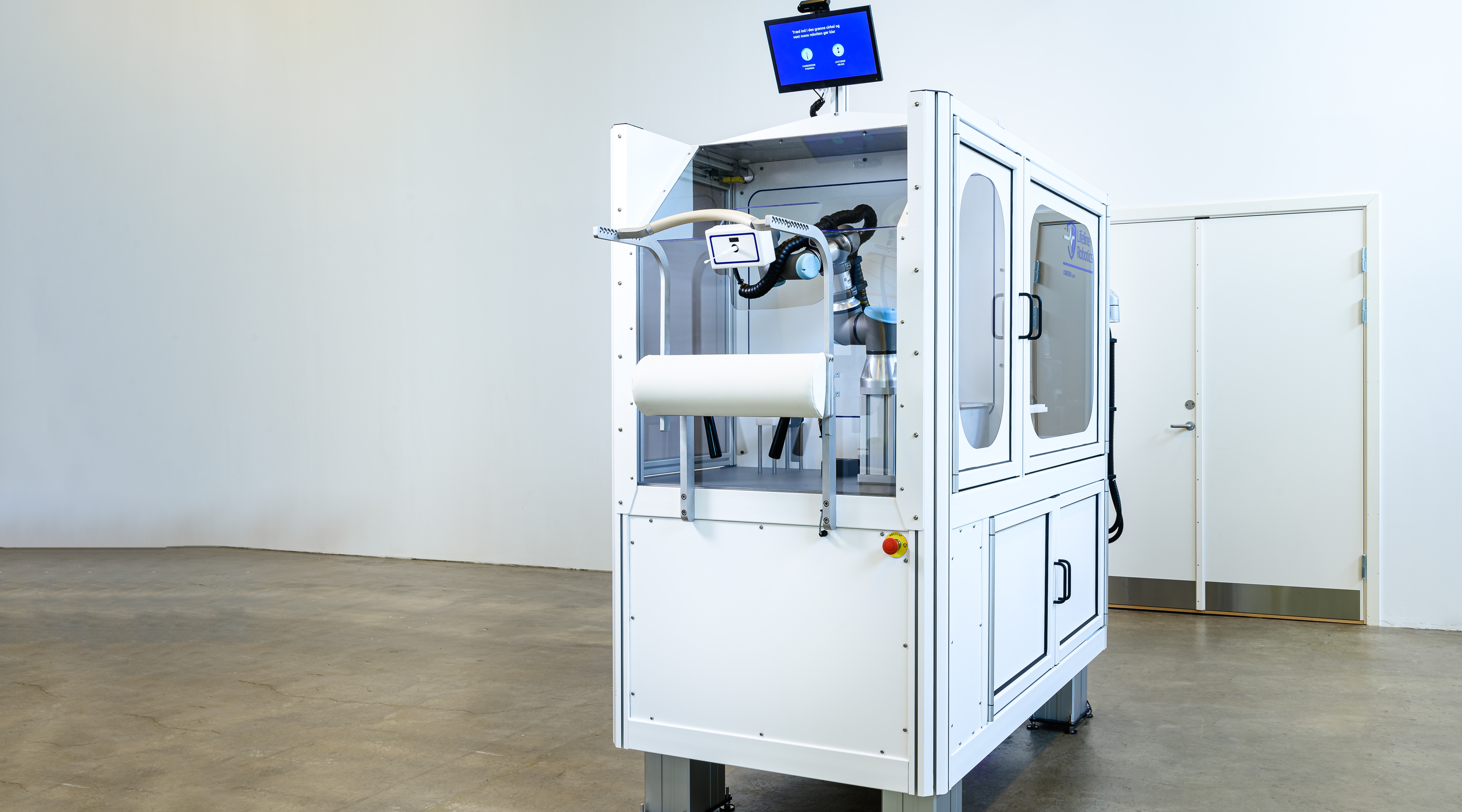
In response to the Covid-19 pandemic, a team of the roboticist from the University of Southern Denmark developed a fully automatic throat swab robot.
I was hired as a contracter via the Copenhagen Institute of Interaction to lead the design efforts of an end-to-end experience. This project was particularly challenging because the interaction required a person to allow a robot to swab the back of their throat, which most participants were not comfortable with. Much of our design efforts was focused on helping make the patient comfortable with this disorienting relationship with a machine.
In parallel to designing the core interactions of their swabbing robot, we explored other alternatives such as a vending machine for self tests.
Read more about Lifeline Robotics.
A screen was positioned at the top for the patient to be guided through the experience

Our team designed the full service, starting from arrival at the test site

Onboaring was designed to help the patient understand how the test works

Part of the UX flow included a practice sequence to get the patient comfortable with opening their mouth properly

Our team tested the first version of the robot to better understand the experience

The robot uses computer vision to detect when it can see the back of the throat and then begins the swab

Our team built a low-fi version of the robot in the studio so we could test interactions rapidly

Our team conducted analagous research to understand other interaction paradigms used for automated systems. Researched included photo booth (as seen here), grocery store checkout, car wash, etc.

